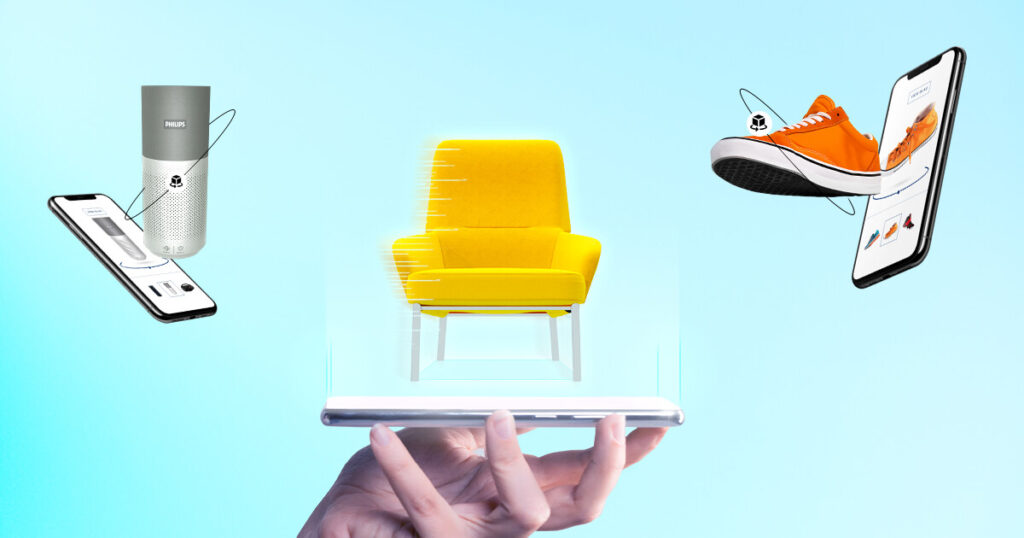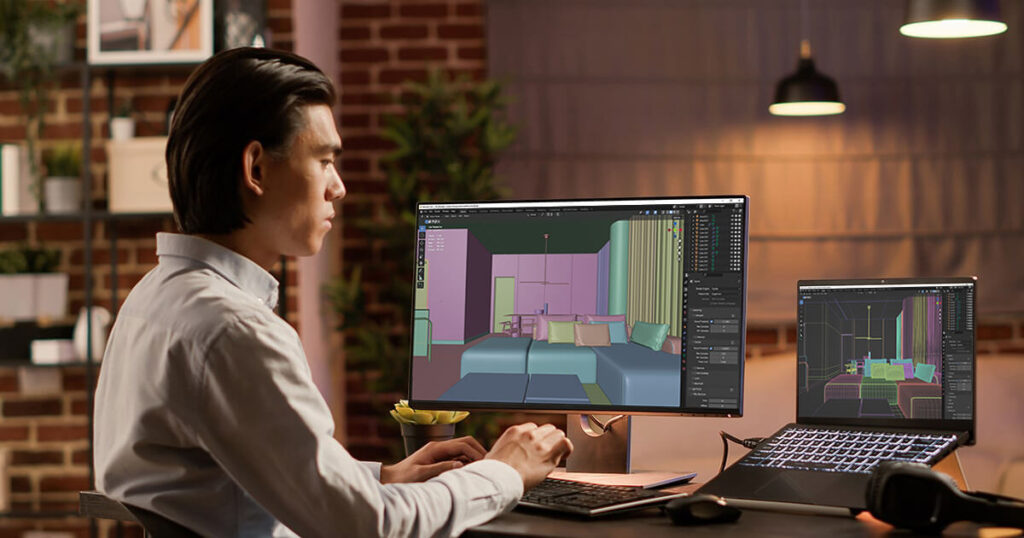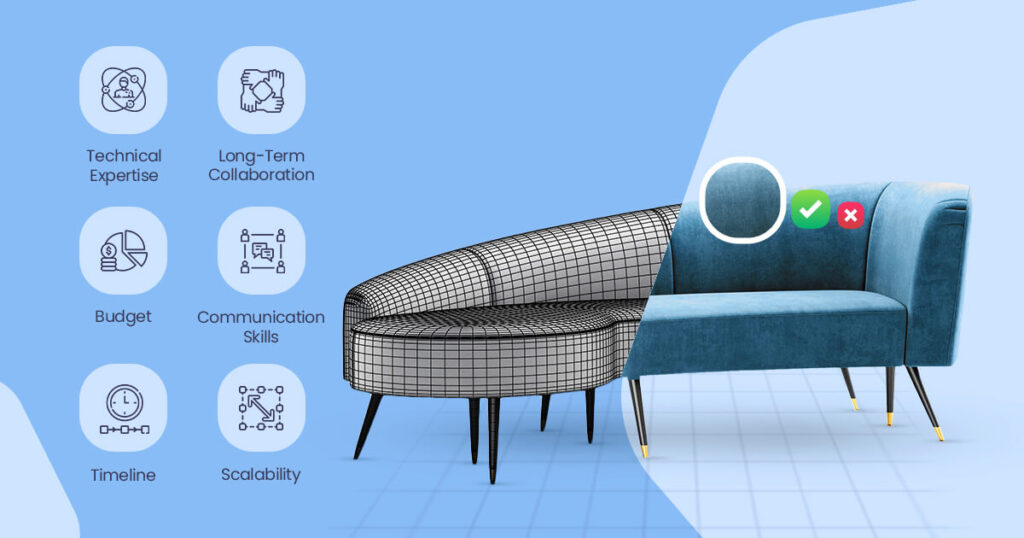Furniture 3D models are revolutionizing the way appointments and commodities operate and connect with purchasers. These digital representations go beyond the limitations of conventional marketing systems to offer a comprehensive and engaging view of products. Furniture businesses can actually promote their offers, enhance the buyer experience, and ultimately increase sales by creating very realistic and customizable images.
For many years, the furniture section has used photography to showcase its items to customers. Traditional product pictures have their uses, but they constantly fail to fully convey the ability of a piece. Photography has limitations in showcasing product details and variations and can be costly and time-consuming. Furthermore, static photos may find it difficult to accurately portray the size and functioning of furniture to viewers.
A progressive and flexible answer to these problems is provided by 3D models. By creating intricate digital representations of furniture pieces, businesses can get around the limitations of photography and provide customers with a more interesting and educational experience. Because 3D models allow for infinite customization, designers and marketers can experiment with different materials, finishes, and configurations. Among other marketing channels, they can be effortlessly included in websites, social networking accounts, and online catalogues.
Benefits of Visualizing Designs with Furniture 3D Models
How 3D Models Help in Visualizing Furniture Designs
When it comes to visualizing designs in a physical and interactive way, furniture 3D models are unrivaled. Designers and other stakeholders may entirely realize a product’s form, function, and aesthetics with 3D models, as opposed to traditional 2D plans or sketches, which only provide a partial picture. By iterating on their designs until they reach the intended result, designers can experiment with alternative shapes, sizes, materials, and finishes by generating virtual prototypes.
The Impact of Visual Representation on Decision-Making
Because it makes communication and decision-making easier, visual representation is essential to the design process. A realistic depiction of a piece of furniture helps stakeholders comprehend its possible effects and make well-informed decisions. Early in the creation process, designers can spot possible problems or places for improvement thanks to the aid of 3D models, which serve to bridge the gap between abstract conceptions and concrete reality.
Examples of How 3D Models Improve the Design Process
- Design Iteratively: With the ability to swiftly experiment with many design variations, designers can make real-time tweaks and assess how these changes will affect the overall functionality and aesthetics.
- Error Mitigation: Potential design errors or inconsistencies can be found and fixed before production, saving time and money, by visualizing the design in three dimensions.
- Client Collaboration: 3D models offer a common visual language that makes it easier to communicate with clients and enable succinct and understandable feedback.
- Market Testing: Before spending money on real prototypes, designers can assess consumer reactions and preferences by putting 3D models into virtual showrooms.
Cost-Effective Prototyping with Furniture 3D Models
How 3D Models Reduce the Need for Physical Prototypes
Historically, furniture producers depended largely on physical prototypes to determine design feasibility and practicality. This procedure is time-consuming, costly, and frequently requires numerous revisions before achieving a final output. Furniture 3D models are a cost-effective alternative to real prototypes in the early phases of the design process.
The Cost-Saving Benefits of Virtual Prototyping
Furniture companies can save a lot of money by switching from physical to virtual prototyping. Substantial savings in project costs might result from the removal of labor costs, material costs, and production time related to physical prototypes. Furthermore, 3D models provide quick design revisions without requiring the expense of reconstructing tangible prototypes for every modification.
The Ability to Make Quick and Efficient Design Changes
Manufacturing design alternatives fast and practically is one of the biggest benefits of 3D models. Designers are allowed to test with some versions and enhance the product’s look and functionality in a matter of minutes by implementing modifications digitally. In the end, this agility increases profitability by quickening the design procedure and cutting down on time-to-market.
Enhanced Marketing and Sales with Furniture 3D Models
How 3D Models Improve Marketing Materials
Marketing parallel is revolutionized by furniture 3D models. Product visuals are converted from still photos into captivating experiences by them. Businesses that sales furniture can produce visually appealing and educational content by utilizing 3D models in marketing materials like brochures, categorize, and websites. Representations of products in high resolution enchant viewers and build a lasting influence by showcasing minute details, rich textures, and overall appeal.
The Impact of Realistic Visualizations on Customer Engagement
3D models can produce realistic visualizations that greatly improve client engagement. Customers connect more deeply and are more likely to believe a product when they can see it in a lifelike way. Through the ability to build personalized pieces, interactive components such as product configurators, which allow customers to customize furniture, further enhance customer interaction. Increased brand endorsement and loyalty result from this degree of involvement.
The Role of 3D Models in Increasing Sales and Customer Satisfaction
3D models reduce the possibility of returns and miserable customers by giving them a precise and appreciable picture of a product. Customers are more likely to make a purchasing choice when they can picture a piece of furniture in their space. Sales will rise as a result, and customers will be happier. Furthermore, virtual showrooms made using 3D models enable clients to view various product combinations and interior design motifs, thereby encouraging purchases.
Efficient Production and Manufacturing with Furniture 3D Models
How 3D Models Streamline the Production Process
As digital blueprints, furniture 3D models greatly expedite the production process. They lessen communication gaps between design, engineering, and production teams and do away with the need for physical prototypes by offering a thorough and accurate depiction of the product. By using a more efficient method, mistakes and delays are reduced because all parties involved have a clear grasp of the product.
The Benefits of Accurate Measurements and Specifications
Worldly building requires correct measurements and standards. With the reduction of error and resource waste, 3D models offer precise measurements, tolerances, and material requirements. Because of the conscientious attention to detail, product quality and promotion time are increased as parts fit together completely. Accurate specifications also aid in the optimal use of materials, which reduces costs and promotes sustainability.
Examples of How 3D Models Improve Manufacturing Efficiency
- CNC Machining: CNC machines may import 3D models instantly, saving setup time and removing the need for human programming.
- Assembly Line Optimization: Constructors can find possible bottlenecks, optimize rally line arrays, and increase workflow skills by examining the 3D model.
- Quality Control: Digital inspection plans that are made using 3D models can help identify flaws early on and minimize the need for in-person inspections.
Conclusion
In short, undertaking the furniture part strength the project reaps many benefits from utilizing furniture 3D models. The effect of this technology is seen in everything from better design visualization and optimizing construction to totally changing marketing and sales. Furniture companies can visualize designs with never-before-seen lucidity, cut costs through effective prototyping, boost marketing campaigns with eye-catching visuals, boost customer satisfaction, and optimize production processes for higher quality and efficiency by using 3D models effectively.
The furniture industry is going through a digital rebellion, and in order to remain competitive, 3D technology has to be adopted. Businesses may grab new opportunities, streamline methods, and provide consumers with excellent value by utilizing 3D models.





